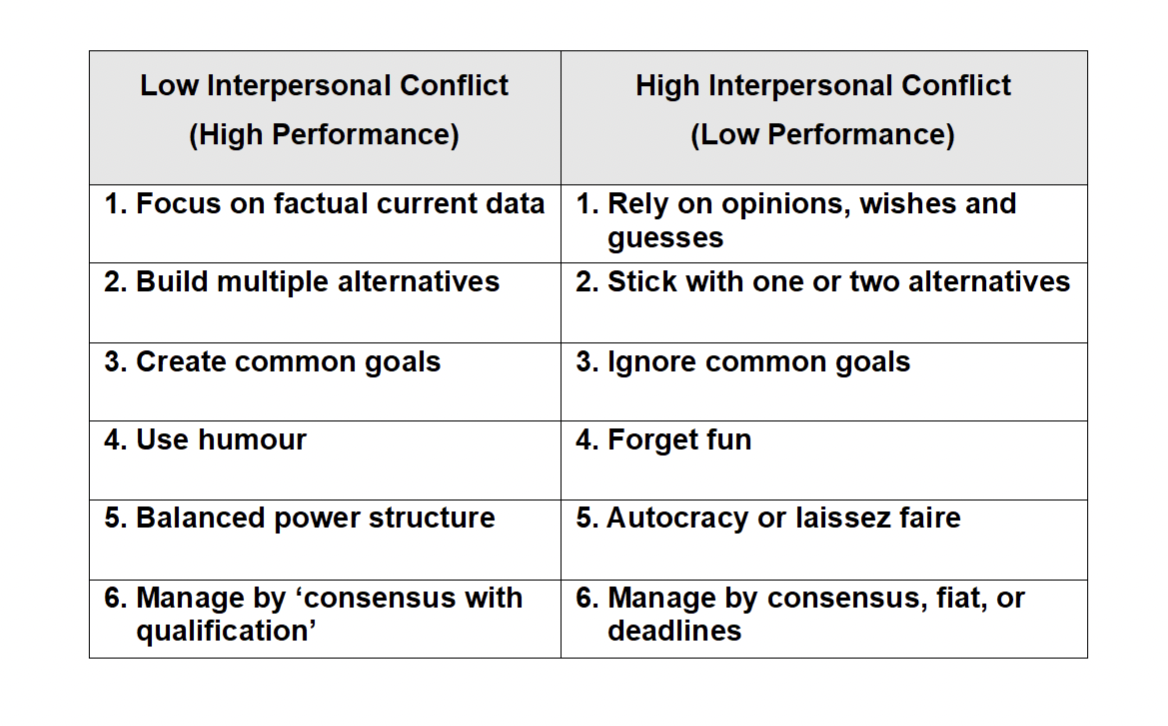The best-performing teams combine a high level of substantive conflict – open discussion about the issues – with a low level of emotional, interpersonal conflict. Here’s how to achieve that as team leader:
When you first start as a marketer, you need to get quickly up to speed on the functional marketing activities in the business - how it does market research, customer analytics, advertising, promotion, and so on. But as you rise through the ranks, your impact and success will also - and increasingly - depend on your leadership skills. You’ll still need to keep sufficiently on top of functional marketing to know what questions to ask your team members, which of their answers to believe, and how to help them do better. That’s not easy: you’ll always be time-pressed and marketing methods are constantly evolving. By the time you’re 40, some of the 25-year-olds in your team will be doing things that didn’t even exist when you were 25. Just five years ago, very few marketers were using AI.
As you take on more responsibility, a key issue will be your ability to extend your, and your team’s, influence upwards and across the company - engaging with and mobilising your boss (by prioritising her big issues and demonstrating results) and your peers (by walking the halls and ensuring you fully understand their priorities and concerns). At a senior level, these upward and horizontal actions, taken together, are even more important for marketers’ business impact and career success than how well they manage their subordinates. (1)
But, of course, successful marketing leadership also means building, aligning, energising and guiding your own team. Aim for a diverse team with a mix of creative and analytical skills and, as far as possible, good networkers and team players. You’ll also need to manage their performance - including underperformance when it can’t be turned round.
This note is about a third, softer dimension of team leadership (ie in addition to team skills/composition and managing performance): building trust and confidence by managing the emotional climate and ensuring that everyone feels they can speak openly about their problems and issues.
That inevitably raises the question of how to manage disagreement and conflict within the team. Conventional wisdom is that you should aim for a ‘Goldilocks’ level of conflict – not too much, not too little. But it’s better to distinguish between substantive conflict (disagreement about goals, priorities, evidence, actions, etc) and interpersonal conflict (animosity, distrust and other negative emotions). The best-performing teams combine a high level of substantive conflict – open discussion about the issues – with a low level of emotional, interpersonal conflict.
The best-known research on how they achieve this was an observational study of twelve top management teams (TMTs) in Silicon Valley in the 1990s (2). The researchers, led by Kathleen Eisenhardt (Stanford University), summarised their results in the table below, contrasting the behaviour of the six high-performing (Low Interpersonal Conflict) teams with what happened in the six lower-performing (High Interpersonal Conflict) teams. This table offers practical guidelines on how to manage team discussions as a marketing leader, whether you’re the CMO or a young graduate running a project with two of your junior peers.

Items 1-4 are self-explanatory, including the use of humour to defuse tensions and meld the team together.
Item 5 means that the best TMTs had a clear leader but power was shared. In the lower-performing (high interpersonal conflict) teams, the leader was either an autocrat or too weak (chaos or laissez faire). Similarly, Item 6 (‘consensus with qualification’) means the leader ensured that all views were properly aired but, if a consensus did not emerge from the discussion, he (3) made the decision and explained the reasons. The weaker TMTs went on and on talking until they finally reached a consensus, or relied on the leader’s arbitrary view (‘fiat’) or a deadline to force the issue.
People don’t like, or work well under, autocratic bosses who don’t listen – but they also don’t like or work well under weak bosses who don’t lead. They work best with a strong boss who enables all voices to be heard, genuinely listens, gets agreement on the facts and then, if there’s still no consensus, makes a clear decision on what needs to be done.
How reliable are these guidelines, given that they’re based on a single, small-sample, interpretative study? Anecdotally, when I’ve discussed it with managers, they’ve almost always said it gels with their experience. (The only big exception was a CEO who got quite defensive - much to the amusement of his top team, revealed to me after the meeting…). And the key distinction between openly expressed substantive (‘cognitive’) disagreement and interpersonal (‘affective’) conflict was also found in a separate large-sample, peer-reviewed research study by Allen Amason (Mississippi State University) in 1996, which concluded that, to improve decision-making, teams should ‘encourage cognitive conflict [and] discourage affective conflict’. As a marketing leader, you should aim to do the same, using Eisenhardt et al’s observations as a guide.
1. Thomas Barta and Patrick Barwise, The 12 Powers of a Marketing Leader, McGraw Hill, 2017. The main results are summarised in the authors’ ‘Why effective leaders must manage up, down and sideways’, McKinsey Quarterly, April 2017.
2. Kathleen M Eisenhardt, Jean L Kahwajy and L J Bourgeois III, ‘How Management Teams Can Have a Good Fight’ by Harvard Business Review 75, 4 (July-August 1997), 77-85.
3. I’m guessing it was almost always ‘he’, given when and where the study was conducted.
Authored by Patrick Barwise Fellow of The Marketing Society
Published 21 August 2024



